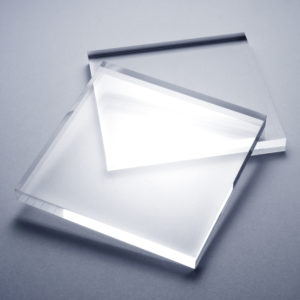How do you bend acrylic plastic sheets?

To Bend Acrylic Sheet You Will Need: Heat Source – Small projects with bends that are close together will need upon heat source which can be easily aimed at small areas. The two best tools for this are a small butane torch, the type used in the kitchen work well, or you can also use an embossing heat tool, used by card makers and scrap bookers to melt and apply embossing powders. For larger projects, it is possible to use a heat gun, of the type used by airplane modelers to apply shrink plastic coatings, or a paint stripping heat gun or regular propane torch. Hair dryers will not achieve the level of heat required for anything more than very thin sheet acrylic and will move too much air to be of much use working with thin materials. Clamps – We like using quick release bar clips but you can use anything that will hold your scrap strip wood in place as a bending jig. Scrap wood – You need a straight-edged piece of wood for your jig; we suggest something at least 1/8 inch thick and wide enough for your clamps. You will also need spacers the same thickness or slightly thinner than the plastic you need to clamp, to keep your strip-wood jig even with the top of the plastic you will be bending. You also need a heatproof work surface or a scrap of MDF or plywood to act as a work surface you can clamp your bending jig to. Plexiglas or Acrylic Sheet – This system works well for small pieces of Plexiglas in thicknesses of up to 1/8 inch. For thicker acrylic, you will need to use a metal bar clamped very securely, and you may only be able to work with narrow strips of material as your heat source may not be able to heat wider areas of thick material. Protective Equipment – Hot plastic can be dangerous. Always work in a well-ventilated area away from flammable materials, other than those you will be working with. Wear eye protection, and use welding gloves or kitchen oven gloves to protect your hands from burns.
Is acrylic stronger than polycarbonate?

Polycarbonate (Lexan) and acrylic sheet (Lucite or Plexiglas) are two of the most frequently used see-through plastics. Each of the two have benefits and drawbacks. Acrylic is shinier and polycarb is stronger. Acrylic is less expensive but easier to crack. Polycarb is more impact resisant but easier to scratch. They are both stronger and lighter than untempered glass Acrylic is 4x to 8x stronger than glass, while polycarb is about 200x stronger.
